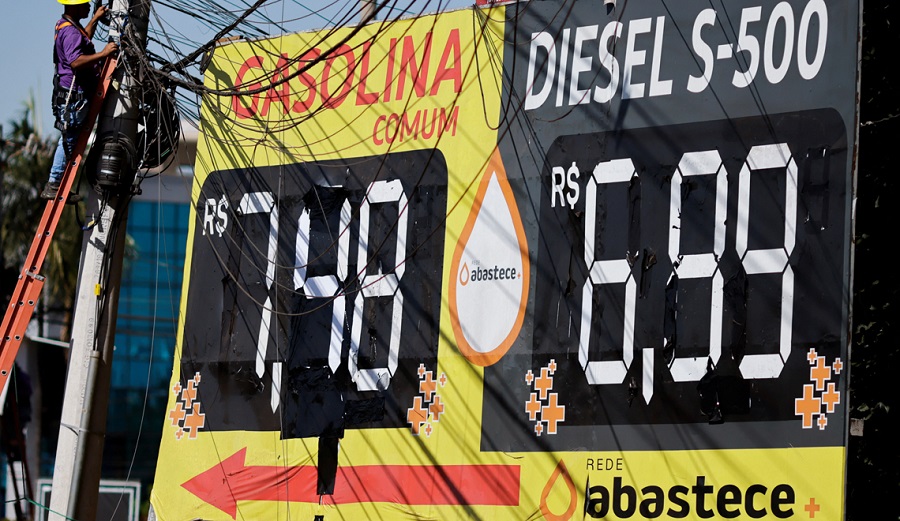
Gasoline and diesel price are displayed near a gas station following the announcement of updated fuel prices at at the Brazilian oil company Petrobras in Brasilia, Brazil June 17, 2022.
US diesel consumption is likely to decline by 200,000 to 600,000 barrels per day (5%-15%) over the next year as the economy slows in response to rising interest rates.
The Federal Reserve is not deliberately trying to induce a recession to bring inflation under control, central bank chief Jerome Powell told legislators on Wednesday.
But he said that was a possible and foreseeable outcome of rapid rate rises – an interesting application of the doctrine of double effect.
The central bank hopes for soft landing but feels it must risk a hard one to reduce inflation running at the fastest rate for 40 years.
Distillate fuel oil, a category that includes diesel, gas oil and heating oil, are the petroleum products most sensitive to changes in the business cycle so they will be impacted most as the rate of growth slows.
Even if the central bank can engineer a mid-cycle slowdown, rather than a cycle-ending recession, consumption of distillates is very likely to decline over the next year.
Both recessions and mid-cycle slowdowns have tended to reduce consumption of distillates by between 5% and 15% compared with the previous year.
With the volume of distillates supplied to domestic customers in the United States running at a little over 4 million barrels per day, the expected decline is equivalent to between 200,000 and 600,000 bpd.
EUROZONE RECESSION
Europe’s distillate consumption is likely to see a similar or greater fall as the region’s economy enters a recession in response to Russia’s invasion of Ukraine and the impact of sanctions.
Eurozone manufacturers are already on the leading edge of a recession, according to preliminary data from purchasing managers’ surveys for the first part of June.
The eurozone composite manufacturing activity index slumped to 52.0 (47th percentile for all months since 2006) in early June, down from 54.6 (65th percentile) in May and 63.4 (100th percentile) in June 2021.
Rapidly escalating prices for crude, diesel, gasoline, gas and electricity as well as food are likely to force households and businesses to reduce spending over the next few months, pushing the economy into recession.
Lower volumes of manufacturing, construction and freight transportation activity will in turn cut diesel and gas oil consumption in the region, likely by a similar amount to the United States.
Lower distillate consumption is the only way to resolve shortages caused by the rapid rebound in economic activity after pandemic lockdowns, Russia’s invasion of Ukraine, and sanctions imposed by the United States, the EU and their allies in response on Russia’s oil exports.
In time, reduced distillate consumption will give the global refiners a chance to replenish severely depleted inventories and take some of the heat out of diesel crack spreads and prices.
Ultimately, reduced distillate consumption will stabilise and then lower fuel prices and transportation costs, which will flow through into slower inflation later in 2022 and 2023.
But the transition to lower oil prices and slower inflation is likely to involve a painful contraction in manufacturing and construction activity and employment first.
The Fed and the other major central banks may not intend to induce a recession or a significant mid-cycle slowdown, but that is the logical effect of sharply higher interest rates and tighter financial conditions.




